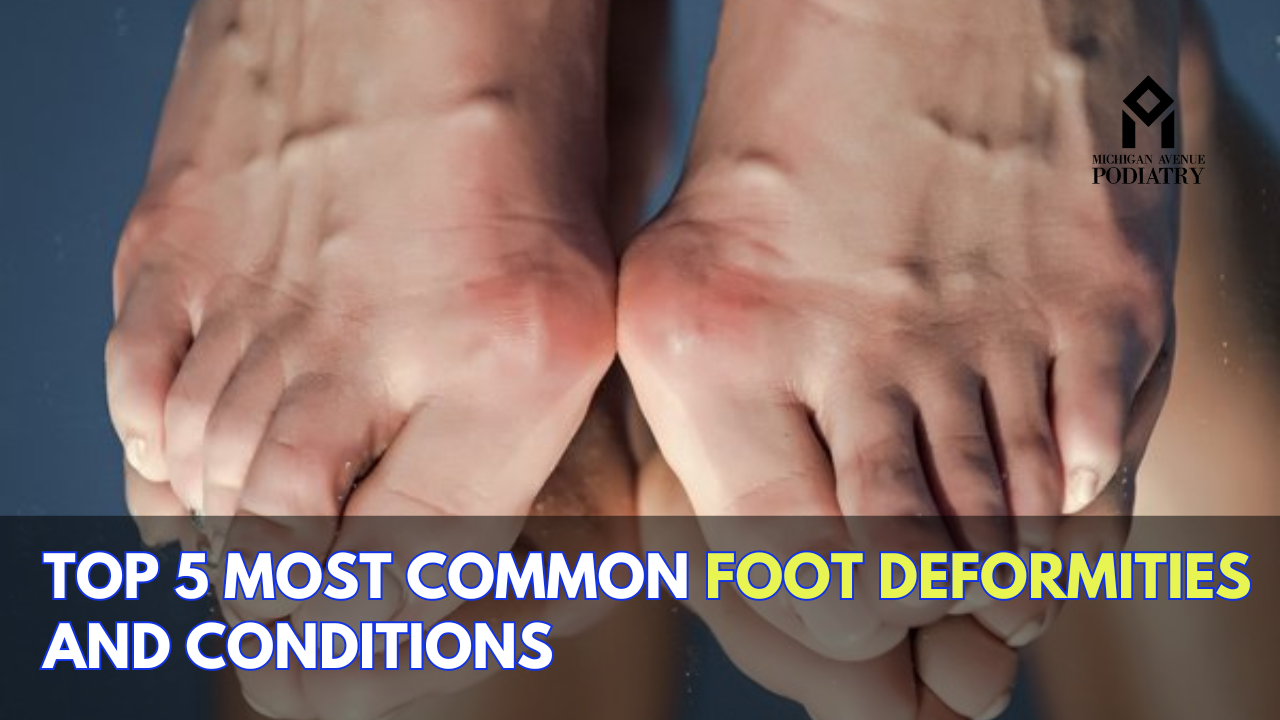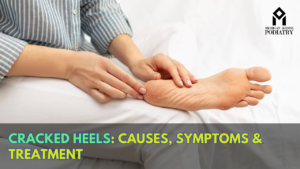Our feet are marvels of engineering, but they are also prone to various deformities and conditions that can impact our mobility and quality of life. From bunions to flat feet, understanding these common foot issues is essential for proper diagnosis and treatment. In this comprehensive guide, we’ll explore the top five most common foot deformities and conditions, shedding light on their causes, symptoms, and treatment options, with insights from podiatrists.
Bunions: Bunions, also known as hallux valgus, are bony bumps that form on the joint at the base of the big toe. They develop when the big toe leans toward the second toe, causing the joint to protrude outward. Bunions can be caused by genetics, improper footwear, or foot injuries. Symptoms include pain, swelling, redness, and restricted movement. Treatment options range from conservative measures such as wearing wide, supportive shoes and orthotic inserts to surgical correction by a podiatrist.
Plantar Fasciitis: Plantar fasciitis is a common cause of heel pain, resulting from inflammation of the plantar fascia, a thick band of tissue that runs along the bottom of the foot. This condition is often characterized by sharp pain in the heel, especially upon waking or after prolonged periods of rest. Contributing factors include overuse, high-impact activities, tight calf muscles, and improper footwear. Treatment typically involves rest, stretching exercises, orthotic inserts, physical therapy, and in severe cases, corticosteroid injections or surgery.
Flat Feet: Flat feet, or fallen arches, occur when the arches of the feet collapse, causing the entire sole to make contact with the ground. This condition can be congenital or acquired and may result in pain, fatigue, and instability while walking or standing. Treatment options include supportive footwear, orthotic inserts, physical therapy to strengthen the muscles of the foot and ankle, and in some cases, surgical intervention to correct severe deformities.
Hammertoes: Hammertoes are deformities of the toes characterized by abnormal bending of one or more joints, causing the affected toes to resemble a hammer. This condition can be caused by genetics, improper footwear, or muscle imbalances in the foot. Symptoms may include pain, corns, calluses, and difficulty wearing shoes. Treatment options range from wearing properly fitting shoes with spacious toe boxes to surgical correction by a podiatrist to straighten the affected toes.
Morton’s Neuroma: Morton’s neuroma is a painful condition that affects the ball of the foot, typically between the third and fourth toes. It occurs when the tissue surrounding a nerve thickens, causing sharp, burning pain, numbness, and tingling in the affected area. Contributing factors include tight shoes, high heels, repetitive stress on the forefoot, and foot deformities. Treatment options include wearing supportive footwear with ample room for the toes, orthotic inserts, corticosteroid injections, and in severe cases, surgical removal of the neuroma.
Conclusion: Understanding the most common foot deformities and conditions is the first step toward effective management and treatment. Whether you’re dealing with bunions, plantar fasciitis, flat feet, hammertoes, or Morton’s neuroma, seeking guidance from a podiatrist is essential for personalized care and treatment plans tailored to your specific needs. By addressing these foot issues early and implementing appropriate interventions, you can alleviate pain, improve mobility, and maintain optimal foot health for years to come.




